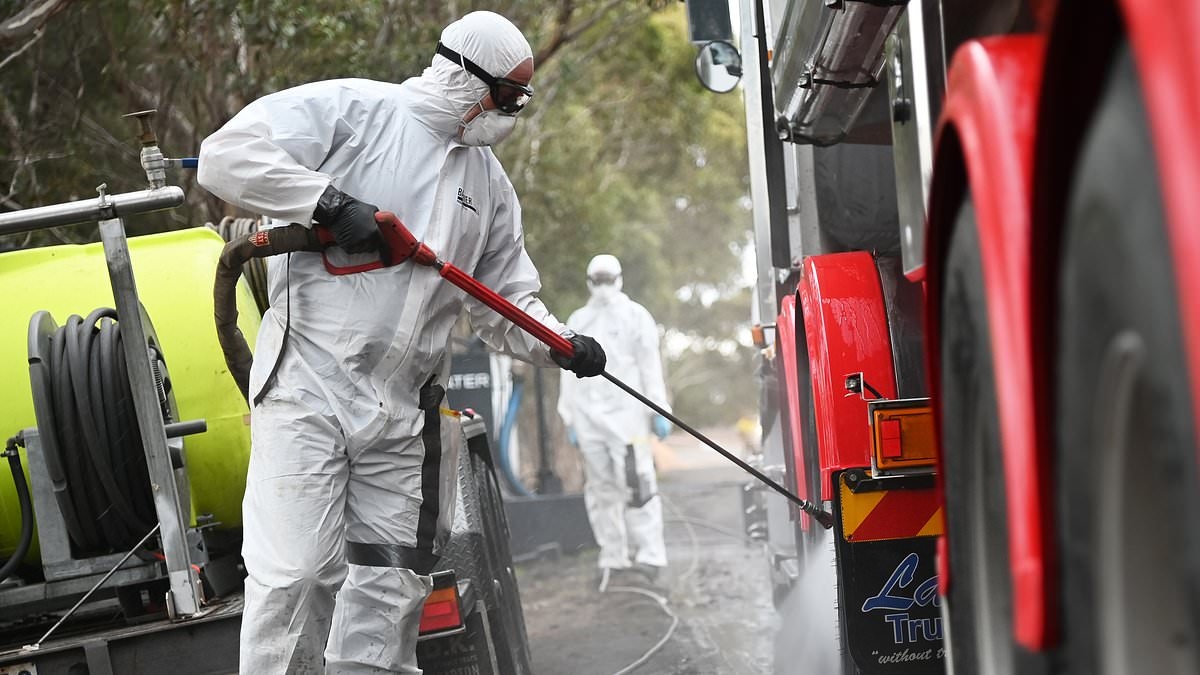More young people developing 'old person disease' with increased risk of severe complications

Published: | Updated:
The number of young people suffering from a severe gut complication usually seen in older patients has risen by more than 50 percent, a new study has found.
Researchers from UCLA and Vanderbilt University conducted a comprehensive review of hospital admissions, interventions, and outcomes for early-onset diverticulitis from 2005 to 2020.
Diverticulitis is the inflammation or infection of small pouches called diverticula that form in the wall of the colon.
It typically causes abdominal pain, fever, and changes in bowel habits such as constipation or diarrhea. In severe cases, it can lead to abscesses, perforation, or bowel obstruction, which could require surgery.
The average age for developing diverticulitis is over 50, with studies showing mean ages of around 52 to 64 for diagnosed cases. But trends could be shifting, the new study shows.
From looking at more than 5.2 million hospitalizations included in the National Inpatient Sample, the researchers found a troubling surge in severe diverticulitis cases among Americans younger than 50.
They found that the proportion of younger patients admitted with complicated diverticulitis rose from 18.5 percent to 28.2 percent, a 52 percent relative increase over the 15-year period.
Overall, roughly 16 percent of the 5.2 million patients hospitalized for diverticulitis in that timeframe were under 50, classifying them as early-onset cases. Past research suggests the Western diet, with processed foods and a high red meat consumption, could be to blame for the trend.
Diverticulitis is the inflammation or infection of small pouches called diverticula that form in the wall of the colon. It typically causes abdominal pain, fever, and changes in bowel habits (stock image)
While the researchers in the new study noted that the reasons behind the rise in early-onset diverticulitis remain unclear, other studies have made the link to certain lifestyle factors.
A large‑scale lifestyle and genetics study by Mass General Brigham in 2025 found that individuals with a healthier lifestyle (non‑smoking, a BMI less than 25, higher physical activity, higher fiber intake, lower red meat consumption) had substantially lower risk of diverticulitis, even if they had a high genetic predisposition.
Meanwhile several studies, particularly a large-scale twin 2012 study conducted in Sweden, have linked diverticulitis to genetics, with estimates suggesting that 40 to 53 percent of the risk is heritable.
The new study further highlighted differences between younger and older patients.
Early-onset patients generally had lower mortality rates, shorter hospital stays - about a quarter of a day less on average - and lower hospital costs, roughly $1,900 less per admission.
At the same time, younger patients were more likely to need invasive interventions, with 29 percent higher odds of a colectomy (a surgery to remove part or all of the colon) and 58 percent higher odds of needing the area to be drained.
A colectomy is a surgical solution for severe, complicated, or recurrent diverticulitis, not a solution for all cases.
For milder cases, treatment typically involves antibiotics and lifestyle changes.
However, the proportion of younger patients undergoing colectomy decreased from 34.7 percent to 20.3 percent, suggesting that more cases are being managed successfully earlier on without surgery.
Lead author and fourth-year medical student at UCLA Shineui Kim said of this finding: 'While younger patients generally have better survival outcomes and shorter hospitalizations, they're paradoxically more likely to need invasive interventions.
'This suggests their disease may be more aggressive or that treatment approaches differ based on patient age and overall health status.'
Actor Josh Gad, 44, said using a GLP-1 drug for weight loss caused him to get diverticulitis
She added that further research is 'urgently needed' to explore exactly what is behind the boom in early-onset diverticulitis.
The new study appears in the journal Diseases in the Colon & Rectum.
The trend, the researchers said, mirrors similar increases in colorectal cancer among younger Americans, raising public health concerns.
An investigation by the American Cancer Society (ACS) found that after a stable 15-year trend, diagnoses of local-stage colorectal cancer (CRC) rose dramatically in adults aged 45 to 49 years old between 2019 and 2022 in the US.
Among this age group, cases were increasing one percent annually from 2004 to 2019, but that increase accelerated to 12 percent per year from 2019 to 2022.
In people 20 to 39 years old, CRC incidence has increased steadily by 1.6 percent annually since 2004 and by two percent and 2.6 percent annually since 2012 among adults 40 to 44 and 50 to 54 years old, respectively.
Overall, from 2021 to 2022, there was a 50 percent relative increase in diagnoses, rising from 11.7 per 100,000 people to 17.5 cases per 100,000 people.
This steep increase was driven by the detection of early, local-stage tumors, which increased from 2019 to 2022 by 19 percent per year for colon cancer and by 25 percent per year for rectal cancer.
Monica - who does not give her last name - found it difficult to get doctors to listen to her health concerns. The Australian, who is currently living in Croatia, was diagnosed with stage 4 colon cancer last year when she was 31 years old
The study's lead author Elizabeth Schafer attributed the rise in colon cancer diagnoses to new recommendations that lowered the screening age for the disease. A second ACS report found CRC screening among US adults 45 to 49 years of age increased by 62 percent from 2019 to 2023.
The recommended age to begin CRC screening was lowered from 50 to 45 by the ACS in 2018 and the United States Preventive Services Task Force (USPSTF) followed suit in 2021.
Early onset colorectal cancer has become the leading cause of cancer-related deaths for men under 50 and the second-leading cause for women under 50 in the US.
Over 50,000 Americans are expected to die from colorectal cancer this year, while 150,000 are predicted to be diagnosed with the disease.
Daily Mail





